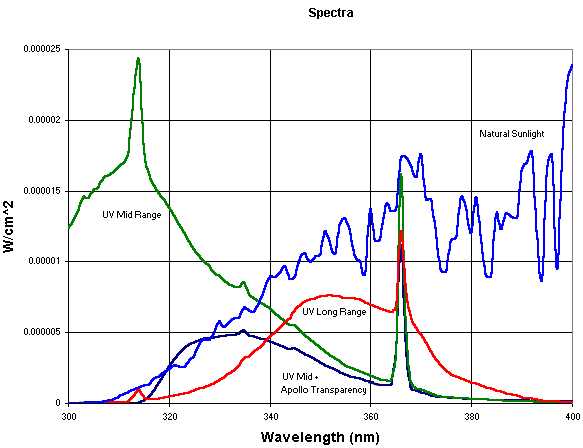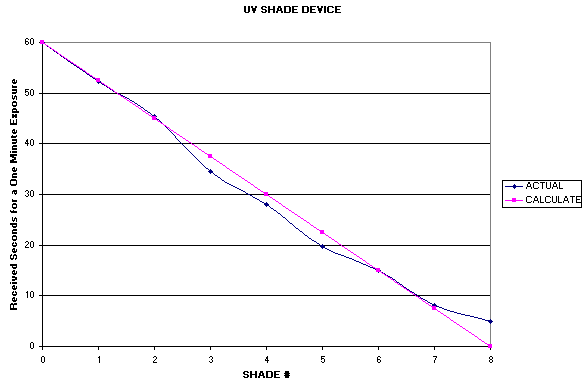
4/8/1999
Different UV lamps available for the classroom have different characteristics.

The best light for the purposes of these experiments is the "MID" one shown in the above graph. When used with the overhead transparency talked about below, it most closely approximates the UV damaging rays likely to be encountered in the intertidal. This is a Blak-Ray Model UVM-57 and can be obtained from Fisher Scientific as catalog number 11-984-62; description is UVP Handheld 6 watt ultraviolet light. The list price is $217. It may be possible to use other lights (long wave UV looks 2nd best), but times will be different (2X?)(4X with transparency). [The above graph suggests that sunlight itself might work, real cheap, except here in Monterey where it is cloudy or foggy most of the time, sigh]
Now, what exposure has the desired effect of blocking fertilization and/or development? We can make up a "grey" scale image to be printed onto a transparency to make this task easier. If we choose an exposure of 60 seconds as our maximum and plot the amount of light getting through each of the different shades of gray in the transparency we get the following:

Where #0 is the clear portion and #8 is the black? Well, almost black. Even with a high quality laser printer, it is not quite black. We can help it along here by using a black "Sharpie" pen to make #8 truly opaque [or black electricians tape, etc.]
Here is a table representing the seconds of UV light let through for a 60 second exposure:
|
Shade# |
0 |
1 |
2 |
3 |
4 |
5 |
6 |
7 |
8 |
|
Seconds |
60 |
52.5 |
45 |
37.5 |
30 |
22.5 |
15 |
7.5 |
0 |
Do sea urchins have a light repair mechanism for UV damage? How might you test this?
See also UV